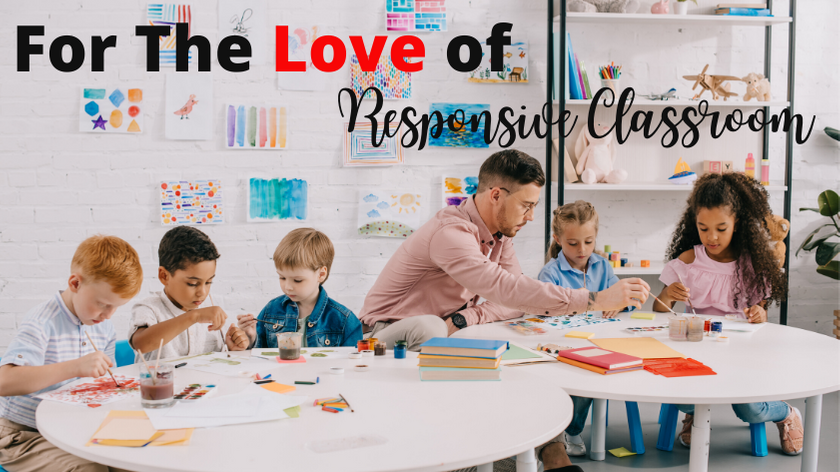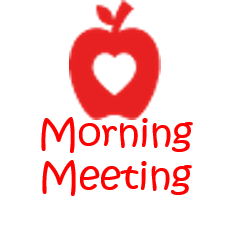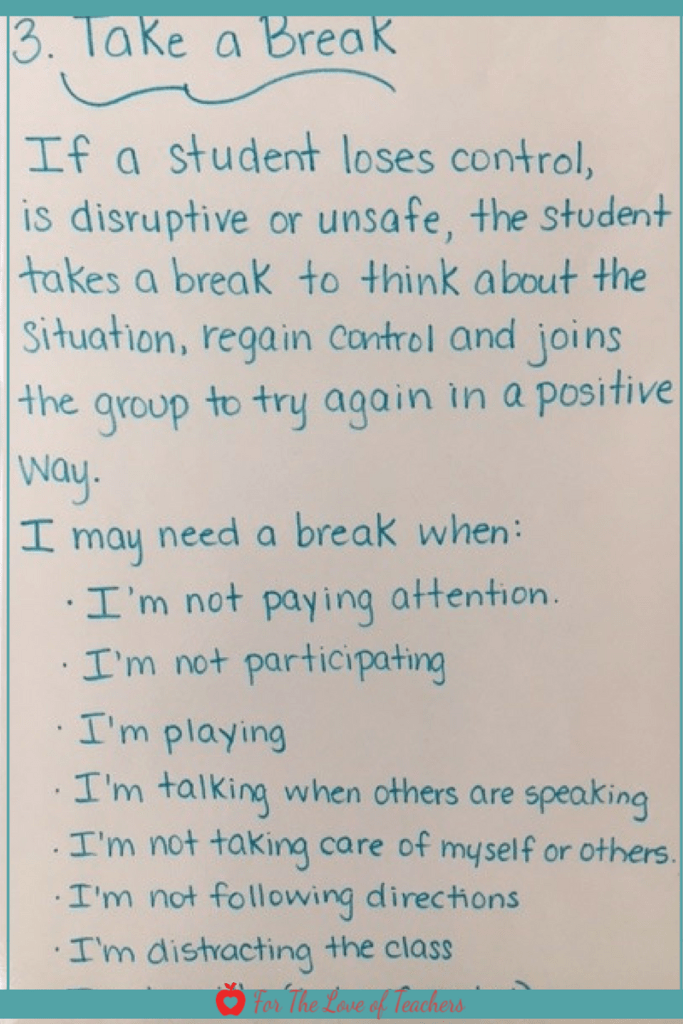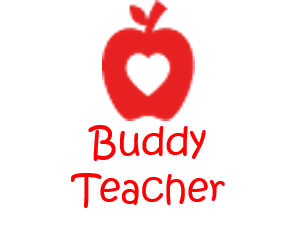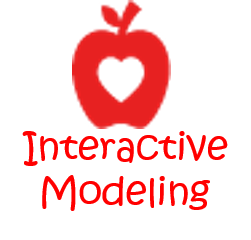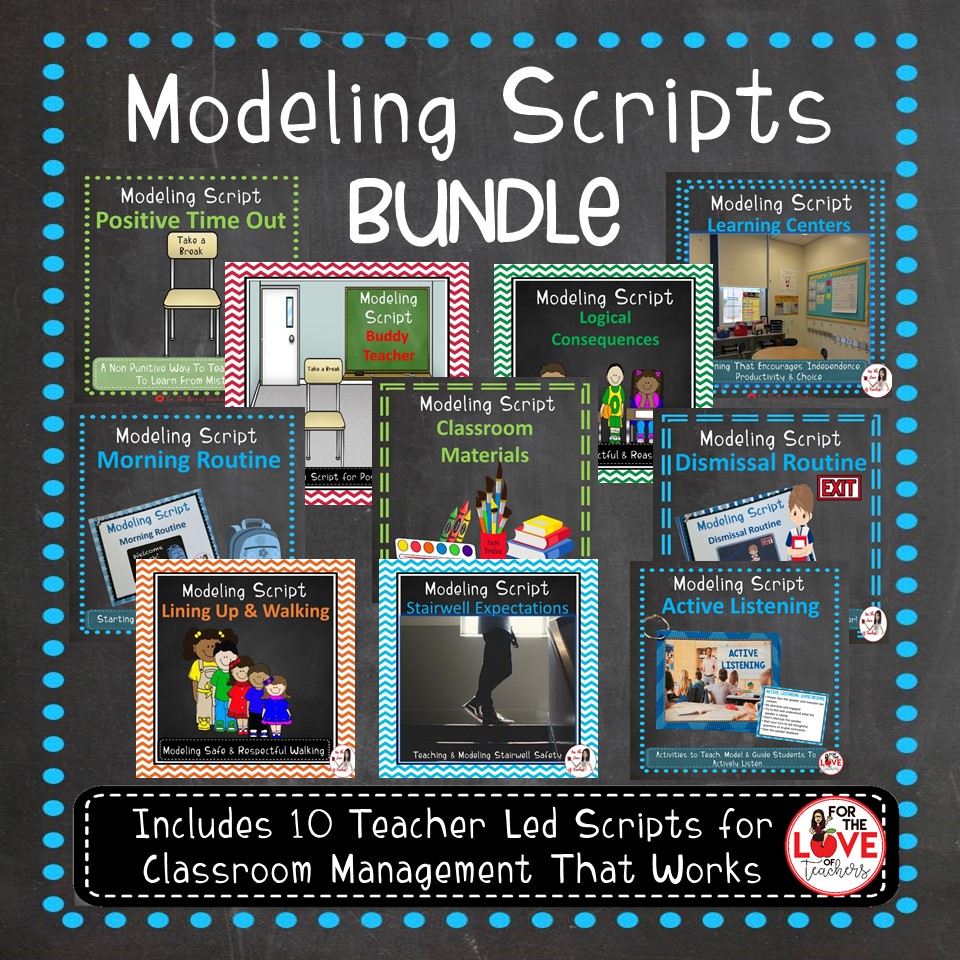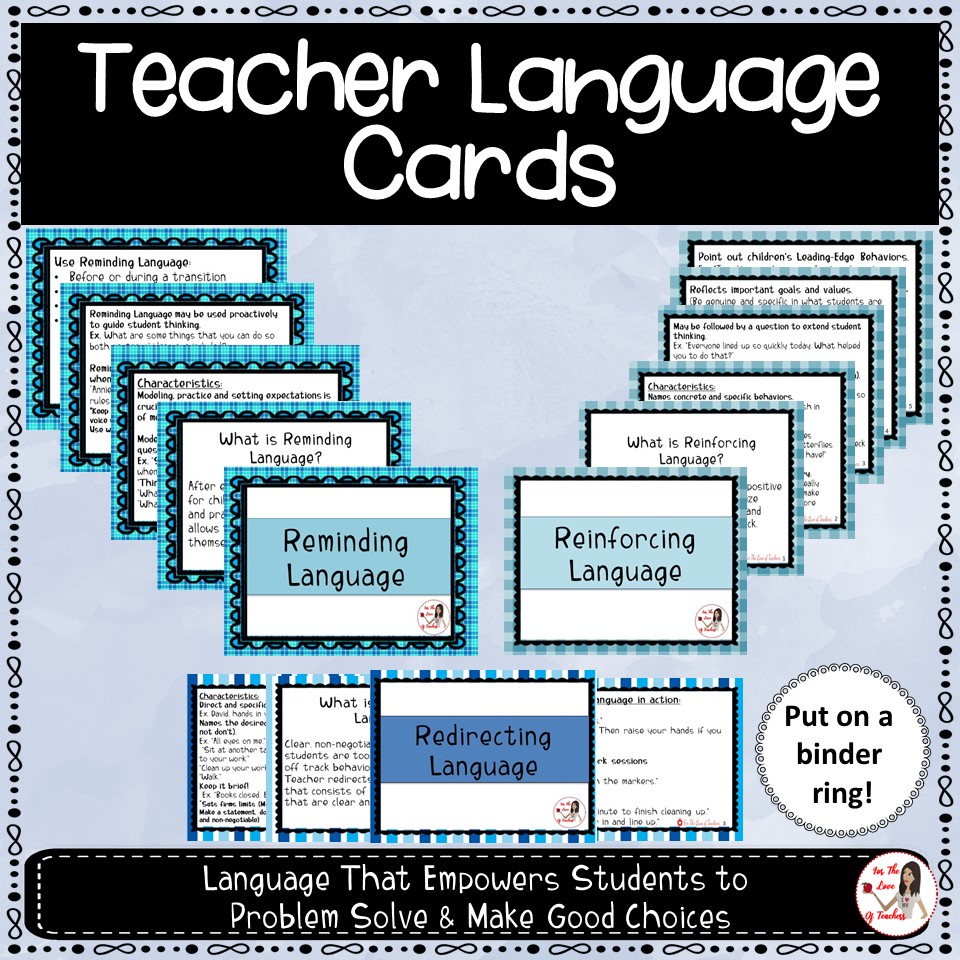What is Responsive Classroom?
Responsive Classroom is an effective approach to meeting the social, emotional, and academic needs of your students. It is a way of organizing and managing your classroom by creating an environment that is conducive to teaching and learning. Building a strong classroom community, interactive modeling, teacher language and more are all powerful components of Responsive Classroom.
Responsive Classroom:
*Teaches social skills
*Builds community with one another
*Helps students to make friends and connections
*Establishes routines, rules, and expectations
*Nips focus and behavior issues early on
Morning Meeting is a 15-20 minute daily routine used to begin the school day. All classroom members gather in a circle to greet one another, listen and respond to each other’s news, practice academic and social skills, and look forward to the events in the day ahead. It serves as a transition from home to school, helps children feel welcome and known, and sets the tone for the day.
The Four Components
-
Greeting- Children greet each other by name, handshaking, hi-five, etc. with a smile and eye contact.
-
Share- Five students per day share some news of interest to the class and respond to each other with thoughtful questions/comments, practicing communication skills, and learning about one another.
-
Group Activity- The whole class does a short fun activity together, building class cohesion through active participation.
-
Morning Message- Students develop language skills and learn about the events in the day ahead by reading and discussing a daily message posted on a chart.
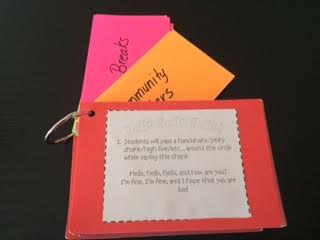
Keep a ring of morning meeting greetings, group activities, and brain breaks.
All students are held accountable for their choices and actions. Responsive Classroom’s Logical Consequences are a way of responding to misbehavior that is respectful of children and helps them take responsibility for their actions. Unlike punishment, the primary goal of Logical Consequences is to help children develop inner control by looking closely at their own behavior and learning from their mistakes. Logical Consequences are related, respectful, and reasonable. Making reparations gives children the opportunity to face and fix their mistakes.
Three Types of Logical Consequences
1. “You Break, You Fix It”
Examples: This consequence teaches children that they are responsible for “fixing” the problem they caused, whether accidentally or intentionally.
-
If a child breaks another child’s pencil, the child who broke the pencil gives the child their pencil.
-
If a child calls another child a name, the child will make a list of nice things about the person.
-
If a child snaps or yells at another child, the child will do something nice to make them smile.
Apology of Action
Sometimes saying “I am sorry” doesn’t always solve a problem or fix a child’s hurt feelings. If a child calls another child a name, the teacher might suggest to the child who called the name to draw a happy picture for the other, make a list of nice things about that person or include them in a friendly game to make up for the name-calling and hurt feelings. This makes the child responsible for their actions as well as fixing their behavior.
-
Positive Time Out
This consequence is a non-punitive approach for children to manage their behavior and regain control even when the smallest disturbances occur before it escalates.
Example:
If a child disrupts a lesson by calling out, the teacher tells the student to take a time out or a “break” in the designated place. In the time the student is in Positive Time Out, the student practices the techniques that have been modeled and taught and returns to the class activity when he/she has regained control.
Model what the students should do while in Positive Time Out. The student thinks about why they are in the chair, brainstorms ways to fix it, and rejoins the group. When the student shows they are ready to rejoin the group, then they may return. Using a non-verbal cue, like a thumbs up, raised hand, or simply just rejoining the group when the student is ready, are all acceptable ways for the student to return to the class activity.
Get a FREE Positive Time Out Modeling Script here or on TPT.
-
Loss of Privilege
When the child’s behavior is unexpected or shows defiance or testing of the school or class rules, the consequence is a loss of privilege.
Examples:
-
If a child is using class supplies unsafely or in an inappropriate manner, the child loses the privilege of using class supplies for that time period.
-
If a child is uncooperative or disruptive during group work, the child loses the privilege of working in the group that day.
-
If a child is not doing their classroom job, the child loses the privilege of having that class job.
If a child continues to be disruptive, cannot regain control, or fix the behavior during Positive Time Out, they are sent to a buddy teacher (another classroom teacher). The buddy teacher removes the student from your classroom to sit in their “Positive Time Out” chair. Sometimes it helps a child to be removed from the situation or setting to cool down before rejoining the group. When the child is ready, the buddy teacher will escort the child back to your classroom. (This takes some modeling and partnership with another classroom teacher.)
When a child disrupts the buddy teacher’s class and cannot regain control, then an administrator should be called, especially if this is an issue of safety and interference with learning for others. An administrator will escort the child to the office to discuss the issue and the child’s parents will be called. A conference will be held with all parties: administrator, teacher, parents, and student.
An effective way for teaching procedures and routines
Do not assume that students know the expectations in your classroom. The first six weeks of school are crucial for establishing rules, routines, and procedures from walking in the hallway to using classroom materials.
Using interactive modeling scripts during the first six weeks of school is a classroom management technique that is worth your time. Model and teach everything from the morning routine, Positive Time Out, logical consequences, dismissal, and more. After you will be able to teach and your students will be ready to learn. You can get interactive modeling scripts at my Shop.
Grab the BUNDLE of Interactive Modeling Scripts here.
Teach Expected vs Unexpected Behaviors- What it looks like and sounds like
-
Expected behaviors in the cafeteria
-
Expected behaviors at lunch
-
Expected behavior at recess
-
Expected behaviors in the restroom
-
Expected behaviors when there is a guest teacher
-
Expected behaviors on the bus
-
Expected behaviors on a field trip

Effective use of language to enable students to engage in their learning and develop the academic, social, and emotional skills they need to be successful in and out of school.
Language, along with expression and tone, is powerful. Teacher Language empowers students to make good choices and to problem solve. Attach these cards (grab this freebie in the sidebar) to a binder ring along with your interactive modeling scripts, for Redirecting Language, Reinforcing Language, and Reminding Language for classroom management that works.

